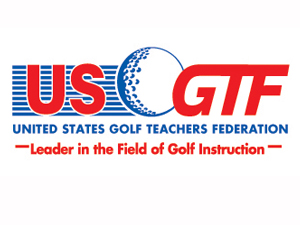A hundred years ago and more, golf instruction consisted mainly of professionals telling students to “do it like this,” and proceeding to demonstrate a swing. They compared what the student was doing to their concept of what a good golf swing looked like, and tried to eliminate the biggest difference(s). As golf progressed into the 20th century, the swing and its individual elements were subject to increased study.
Today, golf instruction is well-entrenched in the scientific age. Advanced video programs, $20,000 harnesses measuring all sorts of variables, hi-tech training aids, and instruction in intricate swing theory are all in common use. To borrow a common phrase, this isn’t your father’s golf lesson anymore.
Yet, this question must be asked: Are all of these modern tools and methods truly good for today’s students? I think the answer is both yes and no. Yes, if they are used in proper context, and no if they aren’t.
As to an example of the latter, I recently observed an assistant professional at a golf course giving a lesson. The assistant graduated from one of those golf academies that are popping up across the country. The lesson involved the assistant telling the student several different things to work on, complete with complex swing theory and explanation.
Now, it was obvious that this assistant learned something about teaching at this academy, but it doesn’t seem that they taught him how to use his knowledge. On the other hand, I can relate, because I used to be him.
I started teaching before there was a USGTF. I was fortunate that the golf school for which I was working had many experienced instructors, and I learned many things from them. At first, because I knew only the basics, I kept my teaching very simple and to a minimum. Most of my students seemed to make good progress, and they were happy with my instruction.
As I learned more, I naturally wanted to impart more information to my students. I gave them several things to work on, to fix each of the “broken” parts of their swings; I broke down their swings on video in the minutest detail; I quoted this teacher and that teacher; and finally, I gave them detailed information so they could truly “understand” their swings. I thought I was doing a great job.
That all came crashing down on me when I gave an individual lesson to a student in Tallahassee, Florida, where I lived at the time. Being from a golf school background, I was unfamiliar with giving a one-hour lesson. I jammed a lot of information into that one hour. When I saw the same student two weeks later, I asked him how he was doing, and he said, “Terrible! I can’t break 100 now!” I gave him 20 minutes of free instruction to try to fix him. In the end, I came up with two simple things for him to work on, he started hitting it better, and went away happy. Needless to say, this was a big eye-opener for me.
Today, I am very conscious of trying not to give too much information. I always ask my students if I’m giving them too much to handle.
But, minimalist teaching is not just about limiting the amount of information. It also involves giving students instruction that they are physically capable of doing and mentally willing to accept. It involves not fixing what isn’t broken, and while this sounds logical and obvious, many teachers do try to “fix” what isn’t really broken. Perhaps this is due to the teacher’s incorrect perceptions or inadequate knowledge, but I think largely it is because we live in an age where too many people think if they don’t dot every “i” and cross every “t,” then their work is deficient. Trying to fix every swing problem rarely works, and unfortunately too many teachers – and students – get wrapped up into trying to do so.
I find, in general, the less I teach during a lesson, the more successful the lesson is. I like to tell people I’m a minimalist teacher. Can you say the same?
Copyright © 2023 United States Golf Teachers Federation, All Rights Reserved
200 S. Indian River Drive, Suite #206, Fort Pierce, FL 34950
772-88-USGTF or 772-595-6490 - www.usgtf.com
200 S. Indian River Drive, Suite #206, Fort Pierce, FL 34950
772-88-USGTF or 772-595-6490 - www.usgtf.com

